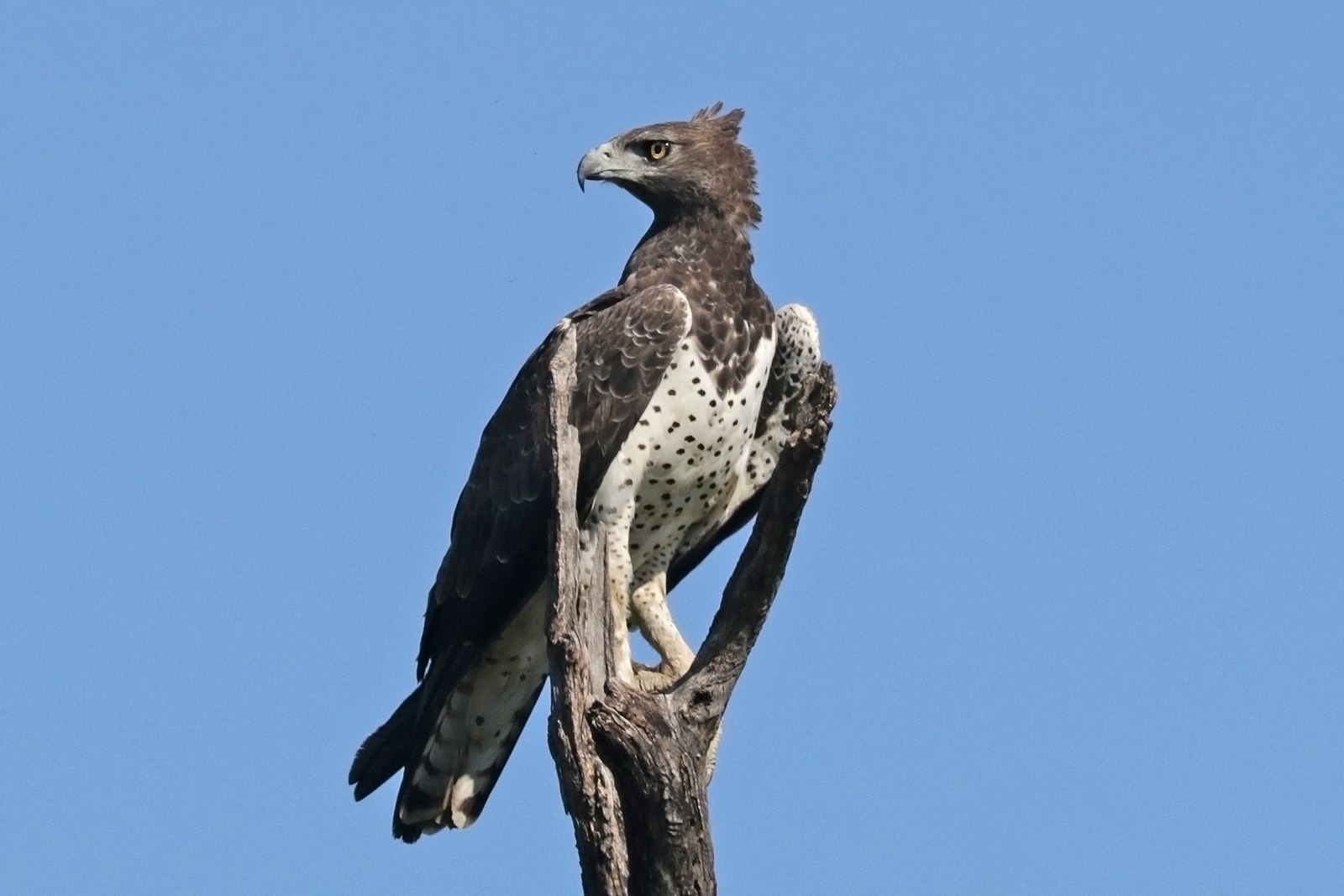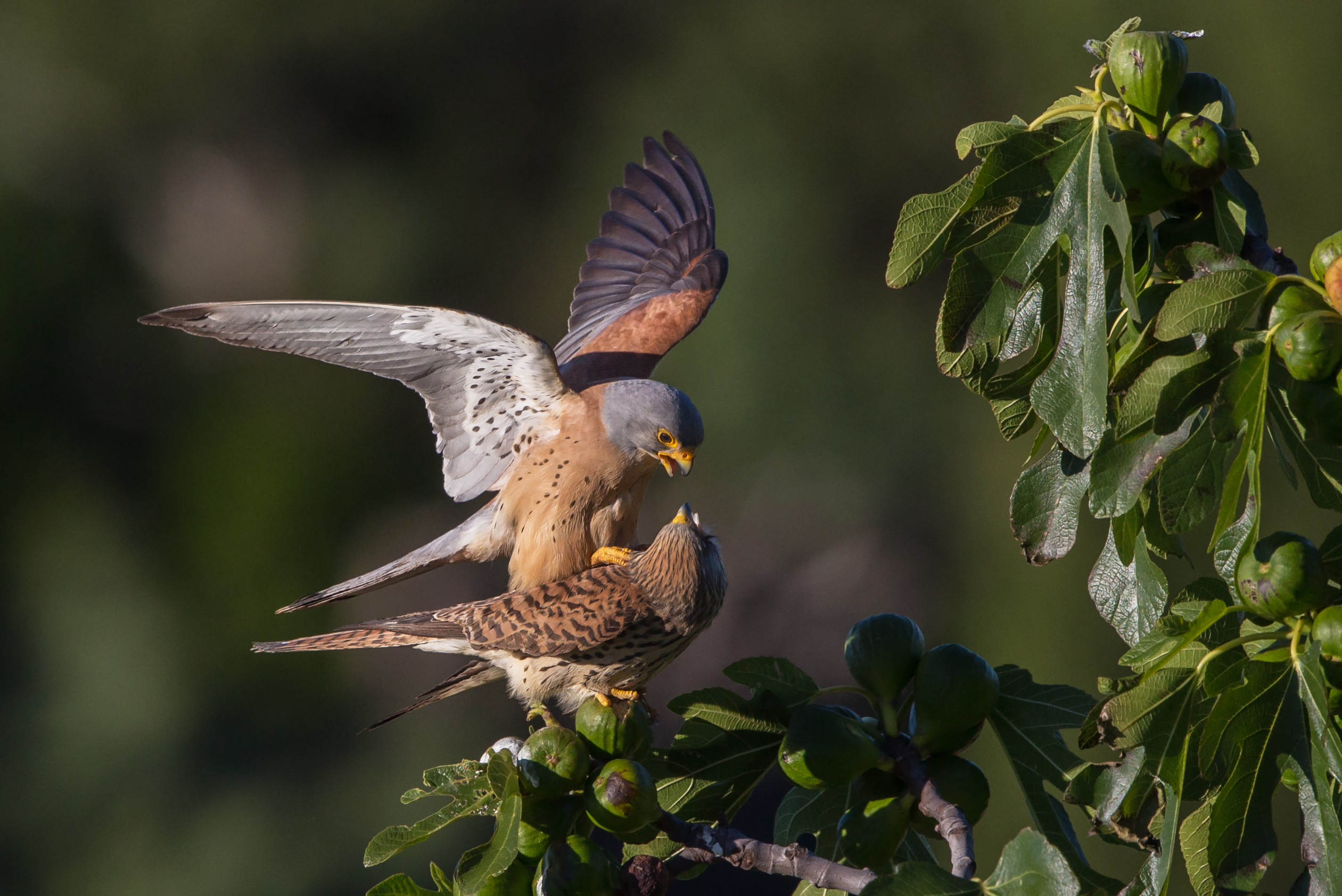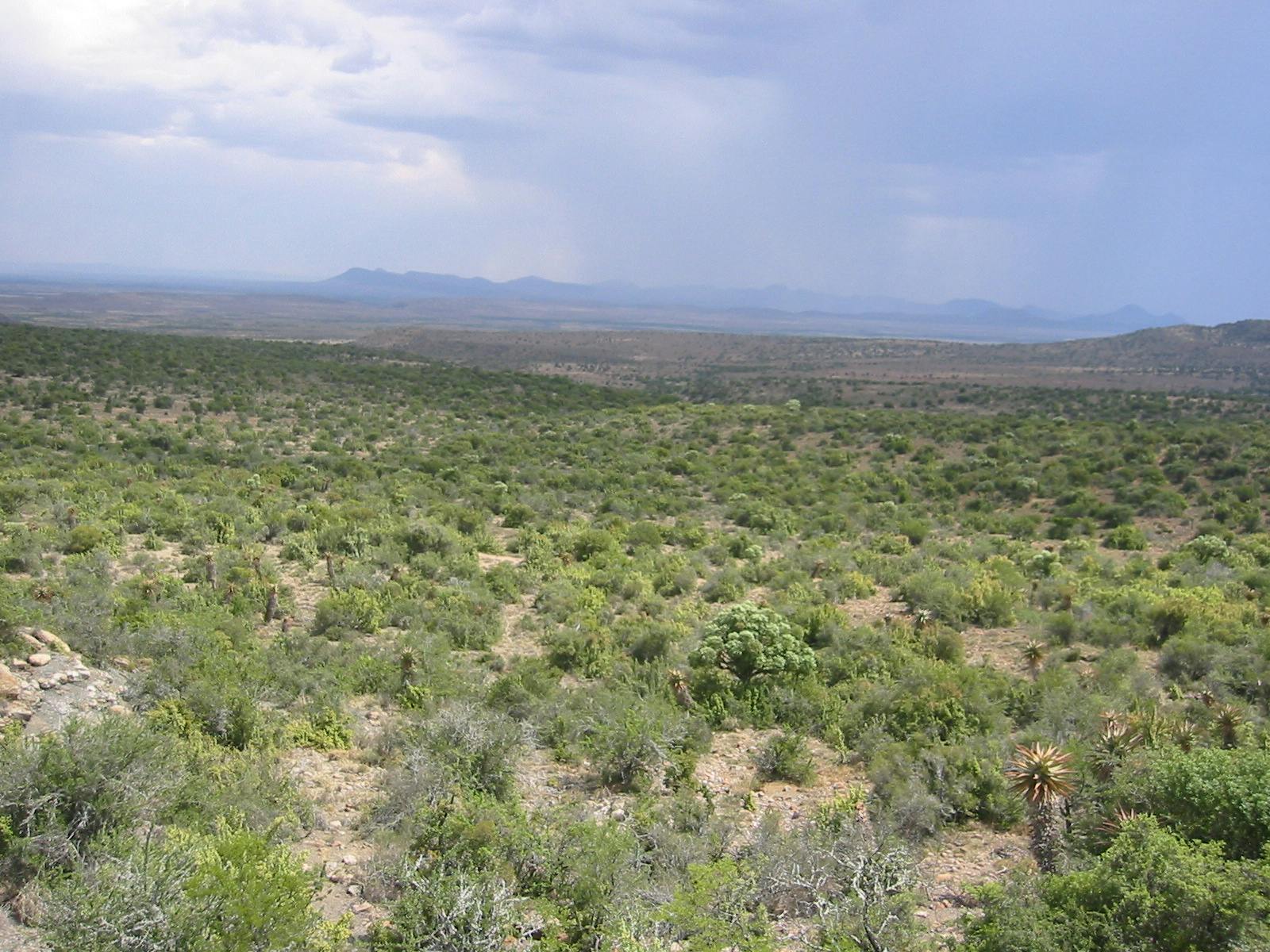Nama Karoo Shrublands
The ecoregion’s land area is provided in units of 1,000 hectares. The protection goal is the Global Safety Net (GSN1) area for the given ecoregion. The protection level indicates the percentage of the GSN goal that is currently protected on a scale of 0-10.
Bioregion: Greater Karoo & Kalahari Drylands (AT9)
Realm: Afrotropics
Ecoregion Size (1000 ha):
16,224
Ecoregion ID:
101
Conservation Target:
11%
Protection Level:
2
States: South Africa
In the mid-to late-1800s, European travelers and colonists witnessed game migrations numbering in the millions across the Nama Karoo. This spectacle has long since ceased through hunting and the development of large-scale livestock grazing. Although other game such as blue wildebeest, blesbok, quagga, and eland were often part of the migrations, springbok were by far the most numerous species.
The ecoregion is a vast, open, arid region dominated by low-shrub vegetation, punctuated by rugged relief. Most of the Nama Karoo occurs on the central plateau of the Western, Northern, and Eastern Cape Provinces, inland of the Southern Fold Mountains in South Africa. The climate of the Nama Karoo is typically harsh. Droughts are common, and both seasonal and daily temperatures fluctuate considerably.
Temperature variations of 25°C between day and night frosts are common. Mean maximum temperatures in mid-summer (January) exceed 30°C, whereas mean minimum mid-winter (July) temperatures are below freezing. Rainfall is unseasonal, though generally peaking between December and March. Annual rainfall ranges between 100 mm to 500 mm, decreasing from east to west and from north to south. Variability in inter-annual rainfall tends to increase with increasing aridity. The Orange River Basin is the region’s main drainage system, although many of the watercourses that feed it flow ephemerally.

The flagship species of the Nama Karoo Shrublands ecoregion is the martial eagle.
Draft shrubs and grasses dominate the current vegetation, their relative abundance dictated mainly by rainfall and soil. Some of the more abundant shrubs include species of Drosanthemum, Eriocephalus, Galenia, Pentzia, Pteronia, and Ruschia, and the principal perennial grasses are Aristida, Digitaria, Enneapogon and Stipagrostis spp. Trees and taller woody shrubs are restricted mostly to watercourses and include Acacia karroo, Diospyros lycioides, Grewia robusta, Rhus lancea, and Tamarix usneoides.
The fauna of the Nama Karoo is relatively species-poor, and there are few strict endemics. Two species of small mammals are strictly endemic: Visagie's golden mole and Grant's rock rat. Among birds, several are near-endemic to this ecoregion: Sclater’s lark, Karoo chat, tractrac chat, Karoo scrub-robin, red-headed cisticola, and the Namaqua warbler. Other characteristic bird species of the Nama Karoo are the tawny eagle and the vulnerable martial eagle, the latter of which is one of the largest and most powerful species of booted eagle.
The reptile fauna contains at least a number of near-endemics, but only a few are potentially confined to the Nama Karoo, including the Karoo dwarf chameleon and Boulenger's padloper. Many of the endemics, and some of the other species present, are relicts of past drier epochs when there was a continuous arid corridor along the southeastern and eastern parts of Africa. Among the fauna to exhibit interrupted distributions are the bat-eared fox, Garman’s toad, fawn-colored lark, and lark species related to the southern African sabota lark.

Lesser kestrels. Image credit: Pierre Dalous, Creative Commons
Only one percent of the ecoregion is protected, which includes the Karoo and Camdeboo National Parks. There are also many smaller nature reserves, including Oviston, Sondersorg, and Aberdeen. Additionally, the Compassberg Protected Environment is included in this ecoregion.
Most of the ecoregion is now rangeland for livestock grazing and, therefore, still intact, although heavy grazing has left parts seriously degraded. This change is thought to be responsible for alterations in both plant species composition and cover. The use of poisoned carcasses by livestock farmers to kill “problem” animals such as black-backed jackals and caracals often results in the poisoning of nontarget raptors.
Some species, like the martial and black eagles, are perceived to prey on domestic livestock, and poultry may be intentionally targeted and persecuted. In addition to pastoralism, alien invasive plants, mining, and agriculture also threaten the ecoregion’s biodiversity.
A number of introduced ornamental (e.g., some Cactaceae) and forage (e.g., Opuntia, Prosopis, Atriplex, and Bromus spp.) plants, together with a few accidental introductions (e.g. Salsola kali and Argemone ochroleuca) have the potential to seriously alter the region’s ecology and hydrology. These exotics disperse efficiently, lack natural controls, and can outcompete indigenous plants for water, nutrients, and light.
The introduced Prosopis tree has become the second most widespread invasive alien plant in the country. Pesticides used to control brown locust outbreaks also impact wildlife habitats severely, with high concentrations being found at the top of the food chain, particularly in raptors.
Since 1962, there has been a gradual increase in native grass species, thought to be caused by an increase in temperatures and an increase in carbon dioxide concentrations. This increase in grass in arid shrublands promotes fuel continuity, resulting in increased fire frequency. This leads to a grass-fire feedback cycle. Fire rarely occurs here. However, it has become more common, possibly due to climate change.
Priority conservation actions for the next decade
- Implement a national strategy to manage invasive species, including Prosopis, and increase monitoring to track the progress of species clearance
- Prevent the spread of man-made fires in protected areas.
- Increase the protected area network.
-
-
1. Burgess, N., Hales, J.A., Underwood, E., Dinerstein, E., Olson, D., Itoua, I., Schipper, J., Ricketts, T. and Newman, K. 2004. Terrestrial ecoregions of Africa and Madagascar: a conservation assessment. Island Press.
2. Kraaij, T., Young, C. and Bezuidenhout, H. 2017. Growth-form responses to fire in Nama-Karoo escarpment grassland, South Africa. Fire Ecology. 13(3), pp.85-94.
3. Masubelele, M.L., Hoffman, M.T., Bond, W.J. and Gambiza, J. 2014. A 50 year study shows grass cover has increased in shrublands of semi-arid South Africa. Journal of Arid Environments. 104, pp.43-51.
4. Shackleton, R.T., Le Maitre, D.C. and Richardson, D.M. 2015. Prosopis invasions in South Africa: Population structures and impacts on native tree population stability. Journal of Arid Environments. 114, pp.70-78. -
Cite this page: Nama Karoo Shrublands. Ecoregion Snapshots: Descriptive Abstracts of the Terrestrial Ecoregions of the World, 2021. Developed by One Earth and RESOLVE. https://www.oneearth.org/ecoregions/nama-karoo-shrublands/
-




